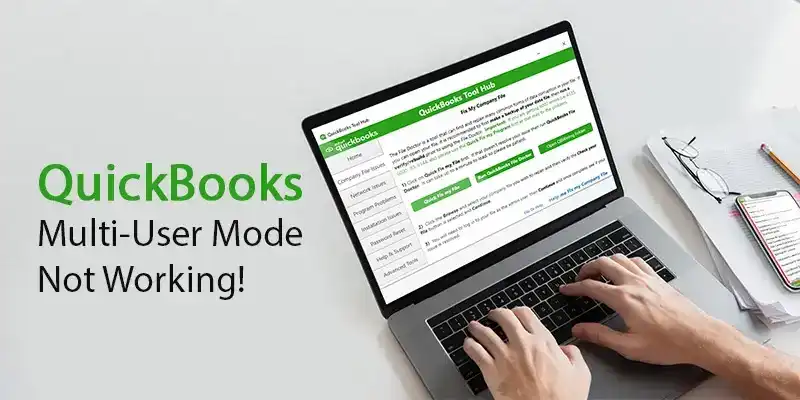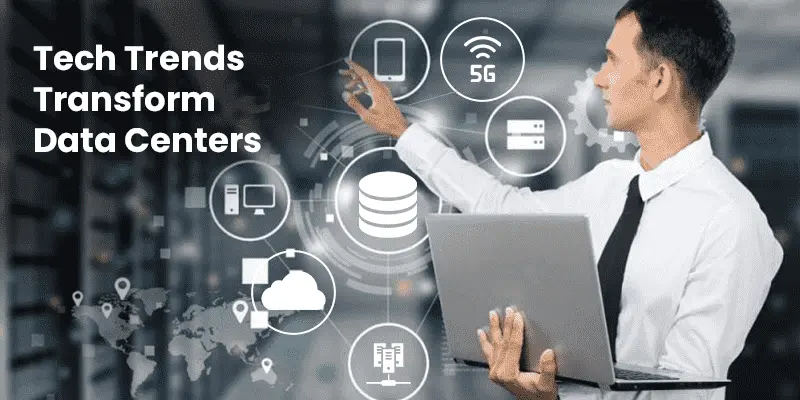
What is Build Back Better
The United States of America faced substantial job losses in view of the COVID-19 pandemic. In May 2020 an independent research finding equated this unemployment crises to the Great Depression of 1929.
Before his inauguration as the 46th President of the United States of America, Joe Biden announced his “Build Back Better” agenda which aimed at economic recovery and support for the American working class.
| Table of Contents: |
What does the Build Back Better Agenda aim to do?
The Build Back Better agenda set out the following goals:
1. Build a Modern Infrastructure
- Invest in training initiatives to help the millions of American workers to create high-quality employment in expanding fields
- Invest in high-quality career and technical education paths and registered apprenticeships for American workers
2. Position the U.S. Auto Industry to win the 21st Century with technology invented in America
3. Achieve a Carbon Pollution-Free Power Sector by 2035
4. Make Dramatic Investments in Energy Efficiency in Buildings, including Completing 4 Million Retrofits and Building 1.5 Million New Affordable Homes
- Address the lack of teachers and enhance the education of teachers, including providing teacher residencies and by developing programs that provide greater results and generate more teachers
- Extend free school food to 9.3 million students and assist families buy food in the summer
- Modernizing school infrastructure to ensure school buildings are up to date, energy efficient, robust, and have technology and laboratory equipment to educate children for the future
5. Pursue a Historic Investment in Clean Energy Innovation
6. Advance Sustainable Agriculture and Conservation
7. Secure Environmental Justice and Equitable Economy Opportunity
These goals were divided into three parts:
1. The American Rescue Plan (ARP)
The ARP is relief package for COVID-19 and has become part of the US Legislation since March 2021 as the American Rescue Plan Act of 2021
2. The American Jobs Plan (AJP)
This was a proposal relating to financing for infrastructure development and to reduce the impact of climate change. The aspects of spending on infrastructure were renegotiated and have been included in the Infrastructure and Jobs Act, which became law on 15 November 2021. Funding for reducing the climate change and aspects relating to Home Care have now been included in the Build Back Better Act.
3. The American Families Plan (AFP)
This is a social policy proposal. Part of this proposal relating to spending on welfare and social services have been incorporated in the Build Back Better Act.
What is American Rescue Plan Act of 2021 (ARP)?
The ARP resulted in a US$ 1.9 trillion relief package for COVID-19 and economic stimulus for the economy of the USA. It became law on 11 March 2021, exactly one year after COVID-19 was declared a pandemic by the World Health Organization.
Some important provisions of ARP include:
1. Extends unemployment benefits till 6 September 2021 and expands these benefits with a weekly supplement of US $300.
- US $10,200 in unemployment benefits for 2020 is not taxable for households with incomes below $150,000
2. $1,400 direct payments to individuals.
- Direct payments to individuals start to phase out for high-income taxpayers. This includes those who received stimulus checks in previous stimulus rounds.
- The stimulus benefit begins to phase out for taxpayers making $75,000 for individuals, $112,500 for single parents, and $150,000 for couples. Those taxpayers who make more than $80,000 for individuals, $120,000 for single parents, and $160,000 for households will not receive any payment.
3. Employers who choose to offer paid sick leave and paid family leave benefits can claim a tax credit for such payments till October 1, 2021. Employers are not required to provide these benefits.
- Expands the Child Tax Credit from $2000 per child to $3,000 per child up to age 17 and $3,600 per child under age 6. The size of the benefit will gradually diminish for single filers earning more than $75,000 per year, or married couples making more than $150,000 a year. This credit is now fully refundable.
- Expands the Child and Dependant Care Credit by increasing the maximum benefit to $4,000 for one eligible individual and $8,000 for two or more eligible individuals. The value of this credit is now based on 50% of the value of specified expenses. Households earning income annual income to a maximum of US$125,000 are eligible for the credit. The credit is nw fully refundable. These changes are for 2021 only.
- The Earned Income tax Credit is available for those above the age of 19 years. Adults not claiming a qualifying child can claim a maximum benefit of US$1,502. These provisions are for 2021 only. A permanent change raises the limit on investment income from $3,650 to $10,000. This is further increase by and index for inflation. The permanent change allows adults with children who do not qualify, to claim it only for themselves.
- Should the Congress or the President decide to cancel and Student Loan, the forgiven debt will not be taxable as a benefit.
- Effective from the tax year 2022 third party settlement organizations face a more stringent reporting requirement threshold. The threshold has been lowered from over $20,000 and 200 transactions to over $600 and no minimum number of transaction.
- Limits the ability of publicly traded companies’ to deduct compensation to employees who earn more than $1 million, from their corporate taxes
- Multinational corporations no longer have discretion in accounting for interest expenses
- Extends “loss limitation” restrictions on unincorporated businesses
5. Grants to small businesses specifically:
- A Restaurant Revitalization Fund has been created. This is a new grant program for restaurants and bars to meet payroll and other expenses. Individual businesses will be eligible for $5 million each.
- Emergency Injury Disaster Loans, a long-term, low-interest loan program of theSmall Business Administration. Priority for some funds would go to severely impacted small businesses that employ fewer than 10 workers.
- A payroll support program for aviation manufacturers for a period of six months.
- Shuttered Venue Operators Grant for music halls and other concert venues.
6. Assistance to state, local, and tribal governments to bridge budget shortfalls and mitigate fiscal shock.
7. Education funding:
- For schools to safely reopen. Funds may be used to improve ventilation in school buildings, reduce class sizes for social distancing, purchase personal protective equipment, and hire support staff.
- For colleges and universities, with the condition that at least half the money must go to emergency grants to students.
8. Funding for housing:
- Rental assistance programs to pay for rental assistance as well as utility fees of households. The funds are provided to states and local governments, which will in turn provide grants to eligible households.
- Homeowner Assistance Fund to prevent homeowners from defaulting on their mortgage or foreclosing on their home, and for other eligible payments. The funds are provided to states and local governments, which will in turn provide grants to eligible households.
- Support to state and local programs for the homeless and at-risk individuals. The programs could cover rental assistance, housing counselling, and homelessness prevention services. State and local governments can buy and convert commercial properties into permanent shelters or affordable housing.
9. COVID-19 funding for vaccines, testing, contact tracing and other healthcare-related funding
10. Grants to public transit and commuter rail agencies, US Airports and Amtrak to mitigate major decreases in ridership and fare revenue due to the COVID-19 pandemic.
11. Grants to airlines and airline contractors for the Payroll Support Program to prevent the furlough of more than 27,000 aviation employees.
The economic-relief provisions are geared toward low-income and middle-class Americans. They will benefit from the direct payments, expansion of low-income tax credits, child-care subsidies, expanded health-insurance access, and extension of expanded unemployment benefits, food stamps, and rental assistance programs. High income-earners, who in the majority, retained their jobs during the COVID-19 economic shock and bolstered their savings have been provided some benefits. Economic aid to lower-income and middle-income Americans has been provided as they are more likely to immediately spend funds on bills, groceries, and housing costs to avoid eviction or foreclosure and thereby stimulate the U.S. economy. Higher income earners are more likely to save the money.
What is American Jobs Plan (AJP)?
On March 31, 2021, a US$ 2.3 trillion American Jobs Plan was unveiled. The plan aimed to create millions of jobs, expand labor protection, and address climate change
The plan called for spending on –
- Transportation infrastructure including highways and roads, American railways, public transportation, and airports,
- Incentivizing adoption of electric vehicles including construction of 500,000 electric vehicle charging stations by 2030; and
- Inland waterways, coastal ports, land ports of entry and ferries.
- Electrifying at least 20% of the yellow school bus fleet in the country
- American energy infrastructure, to transition the country to 100% carbon-free electricity production by 2035.
- Establishing a Grid Deployment Authority to support the construction of high-voltage transmission lines
- Building and retrofitting more than 2 million homes
- Improving public housing
- Modernizing drinking water, wastewater, and storm water systems
- Replacing 100% of the lead water piping in the country
- Delivering universal high-speed broadband coverage
- Plugging abandoned wells that continually release methane emissions
- Constructing and upgrading public schools, childcare facilities, community colleges
- Creating a Civilian Climate Corps, modeled loosely along the lines of the Civilian Conservation Corps
- Research and Development in clean energy and basic climate research.
- Semiconductor technology
- Expanding access to home- or community-based care for seniors and people with disabilities
The Protecting the Right to Organize Act (PRO Act) was included as part of the proposal to bolster unions by overriding state right-to-work laws and safeguarding union elections.
The AJP was subsequently spun off into the $1.2 trillion Bipartisan Infrastructure Investment and Jobs Act, with some aspects carrying over to the Build Back Better Act. The Infrastructure, Investment and Jobs Act was signed into law on 15 November 2021.
What is American Families Plan (AFP)?
The AFP, a social plan, was announced in April 2021. It set aside US$ 1 trillion in new spending and US$ 800 billion in tax credits over a 10 year period for the purpose of –
- Spending on childcare
- Making free pre-kindergarten universally available,
- Government-subsidized paid family and medical leave
- Making community college free for all Americans, and
- Health insurance subsidies being made available through the health care exchanges under the Affordable Care Act
What is Build Back Better Act?
The Build Back Better Act is currently still a bill introduced in the 117th Congress. Some provisions of the original AJP and the AFP are included in this Bill. The bill was passed by the House of Representatives on November 19, 2021. It must be passed by the Senate before it is signed into law by the President
After several rounds of negotiations and revisions the bill finally contains provisions for the following:
- Clean energy and climate change
- Childcare and preschools
- Child tax and earned income tax credits
- Home care and Housing
- Credits under the Affordable Care Act
- Equity and other investments
- Higher education and workforce
- Expansion of Medicare
The amount of costs and investments are still under challenge from various quarters.
Specifics of the bill include:
- Universal preschool for all three and four-year-olds
- Child-care cost cap of 7% of income for parents earning up to 250% of a state’s median income
- $35-per-month limit on the cost of insulin under Medicare & limit on out-of-pocket prescription drug costs at $2,000 per year
- Hearing benefits for Medicare beneficiaries, including coverage for a new hearing aid every five years
- One year of expanded Child Tax Credits
- A provision for 4 weeks of paid family and medical leave
- Extended Affordable Care Act subsidies
Reform for undocumented workers is still under consideration. About 6.5 million non-U.S. nationals would be granted temporary amnesty, and many of them and others would become lawful permanent residents under the provisions of the bill.
Where is all this money coming from?
For the Build Back Better Act, the expenditure and estimates of offsets is presented below:
The main source of revenue is the taxation of the High Net worth Individuals and the large corporations.
| Investments | US$ billion |
| Child Care and Preschool | 400 |
| Home Care | 150 |
| Child Tax and Earned Income Tax Credit | 200 |
| Clean Energy and Climate Investments | 555 |
| ACA Credits, including uncovered States | 130 |
| Medicare Hearing | 35 |
| Housing | 150 |
| Higher Education and Workforce | 40 |
| Equity and Other Investments | 90 |
| Total | 1750 |
| Immigration | 100 |
| Offsets – Estimates, Subject to Confirmation | US$ billion |
| 15% Corporate Minimum Tax on Large Corporates | 325 |
| Stock Buybacks Tax | 125 |
| Corporate International Reform to Stop Rewarding Companies That Ship Jobs and Profits Overseas |
350 |
| AGI Surcharge on the Top 0.02% | 230 |
| Close Medicare Tax Loophole for Wealthy | 250 |
| Limit Business Losses for the Wealthy | 170 |
| IRS Investments to Close the Tax Gap | 400 |
| Prescription Drugs: Repeal Rebate Rule | 145 |
| Upto a Total of | 1995 |
Source: White House
For the ARP and the Infrastructure, Investment, and Jobs Act also the main source of revenue is the taxation of High Net worth Individuals and the large corporations
How will Build Back Better Impact Inflation?
In standard Economic theory, an increase in government spending should increase demand and this in turn would increase inflation if supply cannot keep pace. The inflation will increase even if the government spending is fully paid for through taxes. This is because government spending puts money in the hands of the people whose demand for goods and services arises immediately. The collections on account of taxation would lag this time frame thereby causing a short term deficit and the excess money supply in the economy has an inflationary tendency.
As households spend more by using the money available to them through the various stimulus programs, past and present, the prices will increase. This expenditure can be controlled by increasing the rate of interest on savings. The Federal Reserve would have to keep a watch on the related economic indicators to time the increase in interest rates to prevent the stimulus expenditure failing in its purpose.
There is the additional risk that better tax credits such as the Child tax credit would discourage work among the low income earners. This would clearly impact the intent of creating more jobs and better jobs for the low income earners. Voluntary joblessness would directly impact the supply of goods and services required to meet the additional demand and further push up prices.
Some economists, however, dismiss the argument that Build Back Better would impact inflation. In their view, the stimulus expenditure and the tax revenue estimates are spread over a period of 10 years. As a result, they feel that over time, supply disruptions on account of the pandemic would be resolved making it possible to meet the increased demand. They feel that the overall impact of the Build Back Better stimulus package on inflation would be modest, though initially there could be increase in inflation.
Conclusion
The United States of America is experiencing the highest rates of inflation in three decades. Economists blame this on the expansion of money supply through stimulus packages since the start of the pandemic. Americans can expect high inflation in the next few years from 2022. However, in the longer term, the inflation rate would decrease as the pandemic wanes and the supply chains become efficient.
Inflation is probably the biggest downside to the Build Back Better stimulus package. Nevertheless, in the words of Mr. Richard Neal, Chairman of the Ways and Means Committee –
“Over the past few months, we’ve seen a particularly powerful example of how the tax code can be used to benefit people’s lives. We expanded the Child Tax Credit in the American Rescue Plan, and provided it to families through monthly, advance payments that began in July.
That money allowed folks to keep a roof over their heads, to put food on the table, and to be able to pay for the diapers, medicine, and school supplies their kids need. It lifted millions of children out of poverty and pumped life into the economy as more people could afford to spend money again.”
Disclaimer: This Article is for information only and readers are advised to seek professional advice before acting upon the information provided herein






